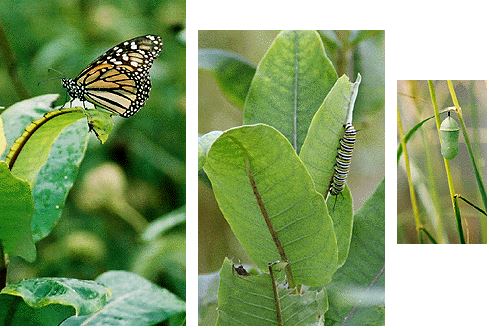
From the tallest bloom…
of the sunflower patch to the lowest cluster dangling on the butterfly bush, the Eastern Tiger Swallowtail (above right) enjoys exploring a wide variety of plants on the grounds. To concentrate the experience of butterfly watching, many types of flowering perennials were chosen to attract several species of butterflies, then planted in a drift of color between our house patio and the vineyard. The hummingbirds also appreciate the effort but we have not yet successfully photographed one of these speedy creatures!

A grouping of mint…
featuring Pineapple Mint, Chocolate Mint, and of course, Catnip all have tufts of lavender flowers which are favored by the Buckeye (shown above) and Red Admiral butterflies. The North Carolina Mountain Mint attracts all types buzzing insects — as many as 10 different types were counted at one time — but they are so busy collecting pollen from this mint’s sturdy flower head that they aren’t concerned about humans in the least.
If you plant it…
they will come. At least that is true for the Spicebush butterfly (below and far right) who showed up promptly after planting their larval food source, the Spicebush! Adults enjoy anything from red clover to geraniums.

The cycle of life…
is played out before our eyes each summer as the Monarchs lay their eggs on our politically-incorrect milkweed patch. The weed’s glorious flower spheres are pleasant to butterflies and humans alike. Tiny caterpillars feast on the milky leaves and the lucky ones make their way to nearby grasses to form a chrysalis.

After precisely 10 days, the transformed caterpillar emerges to dry its wings. In just a few hours, it begins to fly vulnerably around its birthplace and seems to master the skill within another hour. At this point, he or she is indistinguishable from the other Monarchs that will travel together for a winter in Mexico. Their descendants will hopefully find their way back to our milkweed patch the following year.

